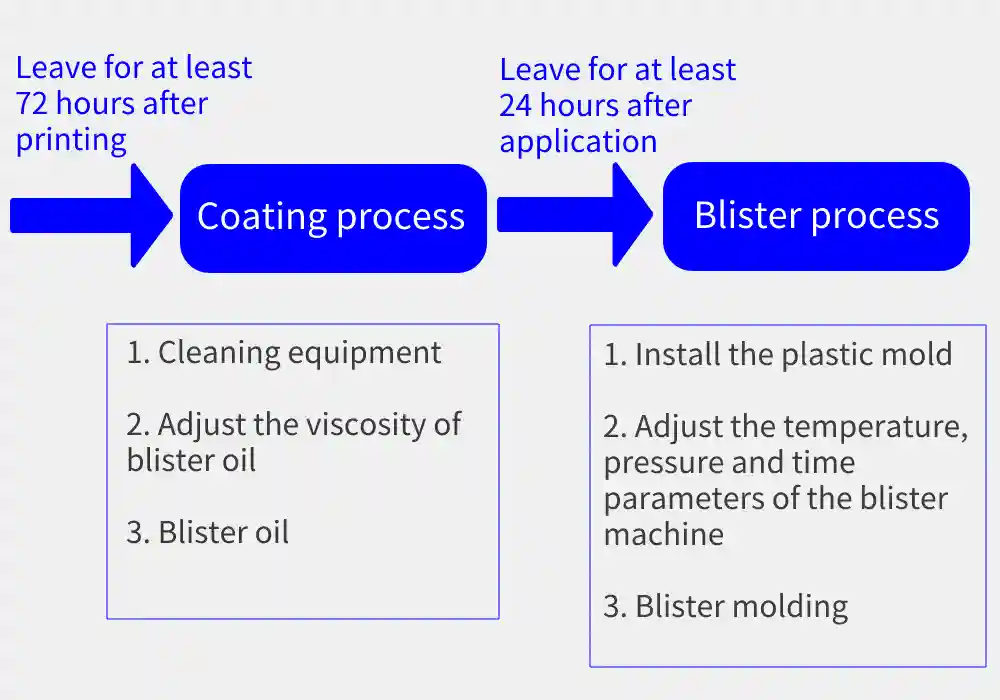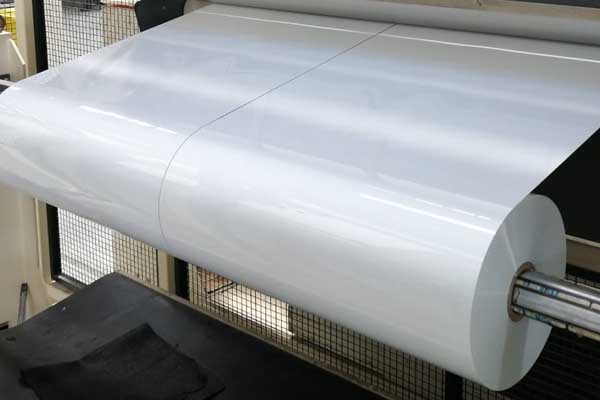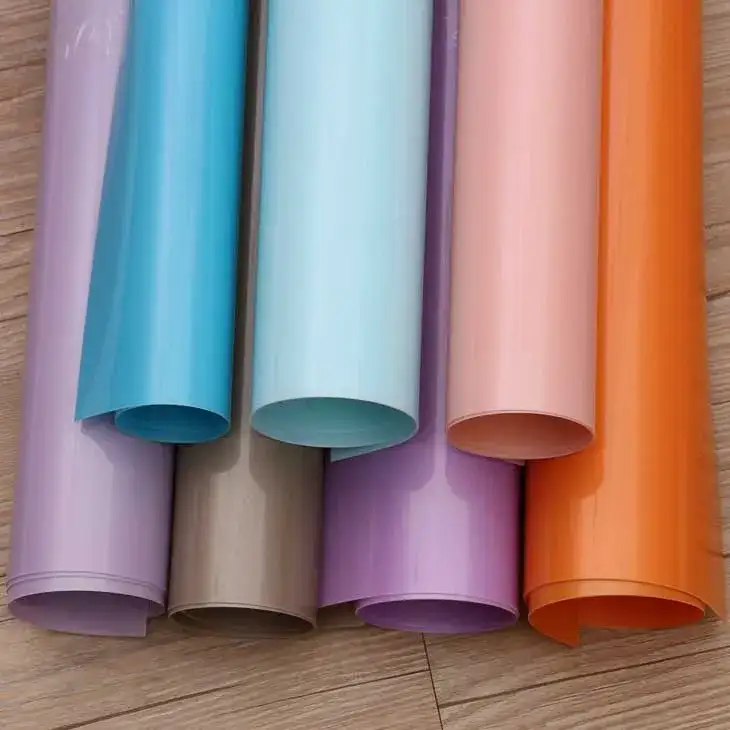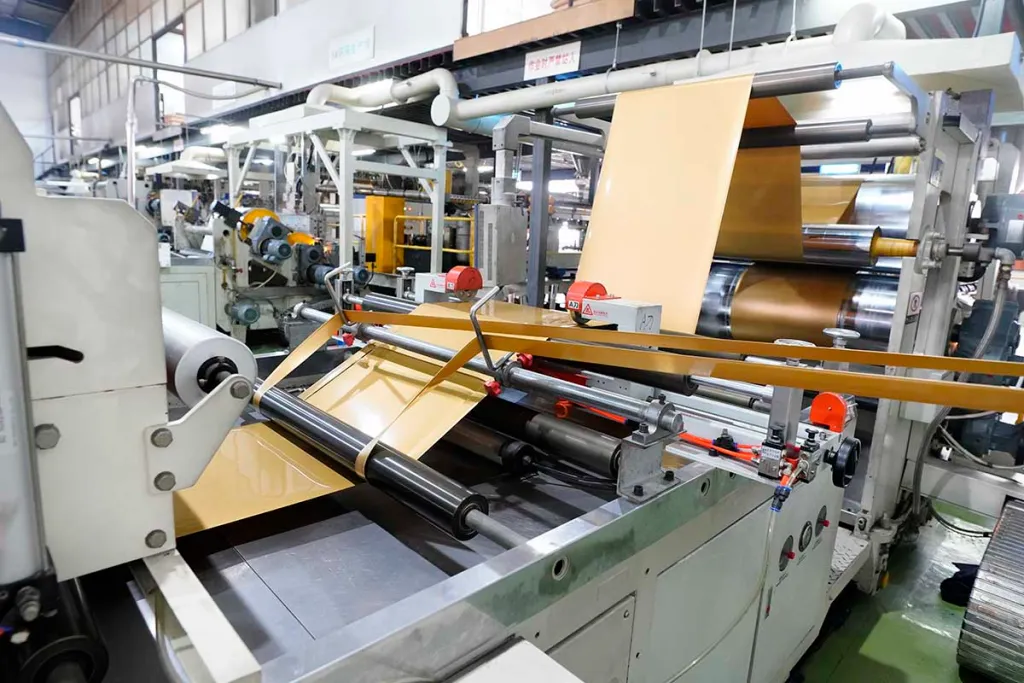Analysis of common causes of poor plastic suction of plastic sheets (part 2)
The influence of the blister process
The blister process includes: the process of printing and coating blister oil and the process of blister heat sealing.

At present, there are three ways to realize the coating process: offline oiling machine full plate oiling, screen printing partial oiling, offset printing connection oiling.
Offline coating and blister processes generally require the product to be placed for at least 72 hours after printing, and the blister oil can be applied to the surface after the large dark ink area is completely dry. Let it stand for at least 24 hours before the blister process.
The current method of oiling the connection (usually using water-based plastic oil) can shorten the time, but the plastic absorption effect is not good. The main control objectives of the oil-passing process: the amount of oil-passing is appropriate (generally about 3-5g/m2, depending on the surface properties of the material and the concentration of the blister oil), and the blister oil is fully penetrated.

During the coating process, the coating amount must be well controlled to ensure the leveling, gloss, penetration effect and dryness of the film surface. The blister process mainly controls the temperature, pressure, time and other conditions to ensure the blister effect.
¢ÙThe coating thickness of blister oil should be appropriate. By adjusting the gap between the metering roller and the coating roller or selecting a suitable anilox roller, ensure that there is sufficient amount of blister oil when applying it. Obvious wrinkling, otherwise it is prone to blister instability;
¢ÚWhen the temperature of the heating plate is greater than the temperature of the blister oil and the blister cover, the heat energy can be in a transfer state until the temperature is consistent, which takes time to accumulate;
¢Û Applying pressure can help to remove the air in the gap to speed up the heat transfer, and help the close adsorption of the blister oil and the blister cover;
¢ÜIt should be noted that the temperature of the heating plate is not the same as that of the blister cover.

The influence of the heating method of the blister packaging equipment
There are three types of heating methods for blister packaging equipment: traditional back heating, heating sheet surface heating, and high-frequency internal heating. Different heating methods, different temperature control methods, and different heat transfer effects result in different softening and cooling effects of blister oil.

1 In the traditional blister process, the back heating method is adopted, the heating plate is heated, and the heat is transferred to the surface of the blister oil and the blister cover through the back heating of the paper card to complete the blister molding process, and the blister temperature is relatively constant and cannot be adjusted quickly.
The heat transfer is greatly affected by the thickness of the paper. The thicker the paper, the more difficult it is to quickly transfer the heat to the blister cover. Therefore, it is necessary to give enough time for the blister press to allow the heat to be fully transferred to the blister cover to ensure the blister. Effect.
2 Heating sheet blister machine, heat and transfer heat on the surface of the blister cover to the surface of the blister oil to complete the blister forming process, and the blister temperature can be quickly adjusted.
Since the heating sheet is in direct contact with the blister cover, when the temperature is too high, the blister cover is easily deformed by heat and the heat is difficult to transfer to the surface of the blister oil (the thinner the blister cover, the easier it is to transfer heat, but the easier it is to deform). To ensure a good blister effect, it is necessary to choose a blister cover with a suitable thickness and adjust the blister temperature and fusion time.
3. High-frequency internal heating, which uses high-frequency electric field to oscillate the internal molecules of the plastic cover and plastic oil to generate heat energy, complete the plastic forming process, and the temperature can be quickly adjusted.
This heating method has the most stable heat transfer, and the corresponding temperature can be adjusted at will according to the properties of the material. However, since a large current will be generated at the moment of fusion, it is easy to generate sparks, and it is not suitable for transferring silver card products.
In practice, since the blister temperature has a great influence on the blister effect, it is generally recommended to use blister packaging equipment that can quickly adjust the temperature.
Relative News
- ESD PET sheet: ITO coating vs antistatic additives
- Why can ESD plastic trays protect electronic prod…
- How to choose between virgin PET sheet and RPET s…
- What kind of blister sheet can be used to make tr…
- Black conductive HIPS plastic sheet roll shipped …
- PULIXIN packaging materials unveiled at Chinaplas…
- PP blister sheet: an environmentally friendly, sa…
- PET blister sheet: transparent protection, fresh …
- PET plastic sheet rolls set sail to help upgrade …
- Key features of our HIPS plastic rolls
